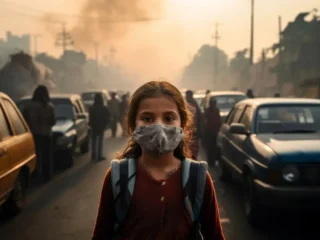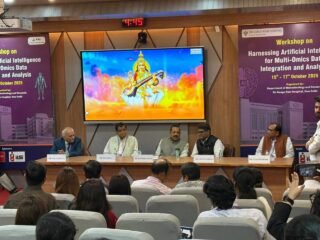New Delhi, 30 September, 2025: Health officials in the United States have raised concerns after traces of Clade 1 of the Mpox virus (formerly known as monkeypox) were detected in wastewater surveillance systems. This discovery has sparked questions about public health risks, transmission, and whether this strain could trigger a wider outbreak.
Here’s everything you need to know about Clade 1 Mpox, how it differs from other strains, and what experts are saying about the situation.
What Is Clade 1 Mpox Virus?
Mpox is caused by the monkeypox virus, belonging to the same family as smallpox (orthopoxvirus). There are two primary clades (variants):
- Clade 1 (Central African strain): More severe, historically linked with higher hospitalization and mortality rates (up to 10%).
- Clade 2 (West African strain): Less severe, responsible for the 2022–23 global Mpox outbreak.
The recent detection in wastewater is worrying because Clade 1 has been considered more dangerous than Clade 2.
How Was It Found in US Wastewater?
Wastewater testing has become a critical tool for detecting infectious diseases since the COVID-19 pandemic. Samples collected from sewage treatment plants can reveal viral DNA shed from infected individuals, even before cases are confirmed.
In this case, traces of Clade 1 Mpox DNA were identified, raising concerns about silent or undetected infections in the community.
How Does Mpox Spread?
The Mpox virus spreads through:
- Close physical contact with an infected person’s rash, scabs, or body fluids.
- Respiratory droplets during prolonged face-to-face interactions.
- Contaminated surfaces or objects like bedding, clothing, or towels.
- Animal-to-human transmission (rare, but possible).
Experts stress that casual, brief contact is unlikely to cause transmission.
Symptoms to Watch Out For
Early Mpox symptoms resemble flu-like illness and can progress to skin rashes. Key signs include:
- Fever and chills
- Headache and muscle pain
- Swollen lymph nodes
- Fatigue
- Rash or lesions on the face, hands, genitals, or other parts of the body
Symptoms usually appear 7–14 days after exposure and last 2–4 weeks.
Is Clade 1 More Dangerous?
Yes. Compared to Clade 2, Clade 1 is historically associated with:
- More severe illness
- Higher fatality rates (up to 10%)
- Increased risk of complications such as pneumonia, sepsis, or eye infections
However, the CDC notes that no confirmed human infections with Clade 1 have been reported in the US at this time.
What Experts Are Saying
“Detection of Clade 1 in wastewater does not mean an outbreak is happening, but it signals the need for enhanced surveillance and public awareness,” says Dr. Anthony Morales, Infectious Disease Specialist at Johns Hopkins University.
“The US has vaccines and antivirals that work against Mpox, but Clade 1’s presence means we cannot afford to be complacent,” adds Dr. Sarah Klein, Epidemiologist at CDC.
Are Current Vaccines Effective?
The JYNNEOS vaccine, already used during the Clade 2 outbreak, is believed to provide protection against both strains. Additionally, the antiviral Tecovirimat (TPOXX) is available under special access protocols.
Health experts recommend vaccination for high-risk groups, including:
- People with close contact to confirmed cases
- Laboratory workers handling orthopoxviruses
- Certain immunocompromised individuals
Should the Public Be Worried?
Experts emphasize caution, not panic. Since wastewater only shows viral DNA, it doesn’t confirm active infections or outbreaks. But it does highlight the importance of:
- Staying alert for symptoms
- Seeking medical help quickly if rashes or unexplained illness occur
- Maintaining hygiene and safe practices in communities
The detection of Clade 1 Mpox virus in US wastewater is an early warning sign, not a confirmed outbreak. While Clade 1 is known to cause more severe disease than Clade 2, no human infections have yet been reported in the US.
Health authorities are closely monitoring the situation, and vaccines plus treatments are available if needed. For the public, awareness and timely medical consultation remain the best defense.







